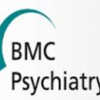 Abstract
Abstract
Background
Previous studies in bipolar disorder investigating childhood trauma and clinical presentations of the illness have mainly focused on physical and sexual abuse. Our aim was to explore further the relationship between childhood trauma and disease characteristics in bipolar disorder to determine which clinical characteristics were most strongly associated with childhood trauma total score, as well as subtypes of adverse childhood events, including physical, sexual, emotional abuse and neglect.
Methods
141 Patients with bipolar disorder were consecutively recruited, and disease history and clinical characteristics were assessed. History of childhood abuse was obtained using the Childhood Trauma Questionnaire (CTQ). Statistical methods used were factor analysis, Poisson and linear regression, and generalized additive modeling (GAM).
Results
The factor analysis of CTQ identified three factors: emotional abuse/ neglect, sexual abuse and physical abuse. There were significant associations between CTQ total score and earlier onset of illness, reduced level of psychosocial functioning (GAF; Global Assessment of Functioning) and decreased number of hospitalization, which mainly were due to the factor emotional abuse/neglect. Physical abuse was significantly associated with lower GAF scores, and increased number of mood episodes, as well as self-harm. Sexual abuse was significantly associated with increased number of mood episodes. For mood episodes and self-harm the associations were characterized by great variance and fluctuations.
Conclusions
Our results suggest that childhood trauma is associated with a more severe course of bipolar illness. Further, childhood abuse (physical and sexual), as well as emotional abuse and neglect were significantly associated with accelerating staging process of bipolar disorder. By using specific trauma factors (physical abuse, sexual abuse and emotional abuse/neglect) the associations become both more precise, and diverse.



Comments (0)